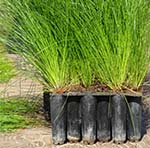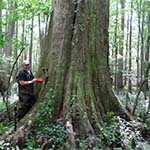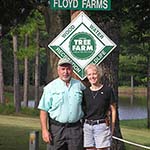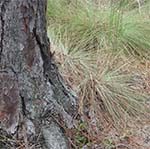Getting Started
What do you want to do with your land? Improve habitat to attract bobwhite quail? Generate income for retirement? Develop a trail system for recreational use? Your objectives for your forest will determine how you manage your land. And it will guide you as you set management priorities, decide how to invest your time and money, and communicate with the natural resource professionals who work with you. Whatever you envision for your forest, the best way to achieve your goals is to have a written forest management plan.
 |
WHY YOU NEED A FOREST MANAGEMENT PLANHaving and carrying out a management plan provides for a healthier forest. It also helps save time and money while increasing returns and enjoyment. To be eligible to participate in certification and tax and cost-share programs you must have a written management plan. Discover how a management plan can help you and your forest here.
|
 |
SETTING GOALS AND OBJECTIVESGoals and objectives are a landowner’s big-picture vision for the property and are the most important part of a forest management plan. They are the foundation for all management decisions and activities. Read here to learn things you should consider when setting your goals and objectives. |
 |
MAINTAINING RECORDSKeeping good records of management activities is important for income tax purposes, complying with ATFS certification requirements and making better forest management decisions. Learn about the documents you should keep and why you should keep them. |
 |
BECOMING A CERTIFIED TREE FARMERThe American Tree Farm System (ATFS) is a unique certification program designed specifically for landowners who actively manage woodlands between 10 and 10,000 acres in size. The ATFS sign tells your community, and the world, that you are meeting the highest standards of sustainablilty and are a good forest steward. |
 |
GLOSSARY OF FORESTRY TERMSLearn common forestry terms so that you can communicate more effectively with the natural resource professionals who are helping you manage your woods. |
 |
WHO CAN HELPA survey of Southern forest landowners found that “most family forest owners have a deep love for their land and a strong desire to do what is right, but they need help in knowing what their options are and what is best for them and their woods.” (Butler 2013) Here is information on professional forestry assistance available to North Carolina’s woodland owners. |
